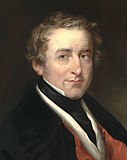
Back যুক্তরাজ্যের সাধারণ নির্বাচন, ১৮৩৭ Bengali/Bangla Elecciones generales del Reino Unido de 1837 Spanish Élections générales britanniques de 1837 French 1837년 영국 총선 Korean Alegeri legislative în Regatul Unit, 1837 Romanian Парламентские выборы в Великобритании (1837) Russian Парламентські вибори у Великій Британії 1837 Ukrainian
This article needs additional citations for verification. (January 2021) |
| |||||||||||||||||||||||||||||||||||||
All 658 seats in the House of Commons 330 seats needed for a majority | |||||||||||||||||||||||||||||||||||||
|---|---|---|---|---|---|---|---|---|---|---|---|---|---|---|---|---|---|---|---|---|---|---|---|---|---|---|---|---|---|---|---|---|---|---|---|---|---|
| |||||||||||||||||||||||||||||||||||||
 Colours denote the winning party | |||||||||||||||||||||||||||||||||||||
 Composition of the House of Commons after the election | |||||||||||||||||||||||||||||||||||||
| |||||||||||||||||||||||||||||||||||||
The 1837 United Kingdom general election was triggered by the death of King William IV and produced the first Parliament of the reign of his successor, Queen Victoria. It saw Robert Peel's Conservatives close further on the position of the Whigs, who won their fourth election of the decade.
The election marked the last time that a Parliament was dissolved as a result of the demise of the Crown. The dissolution of Parliament six months after a demise of the Crown, as provided for by the Succession to the Crown Act 1707, was abolished by the Reform Act 1867.
Cite error: There are <ref group=lower-alpha> tags or {{efn}} templates on this page, but the references will not show without a {{reflist|group=lower-alpha}} template or {{notelist}} template (see the help page).

